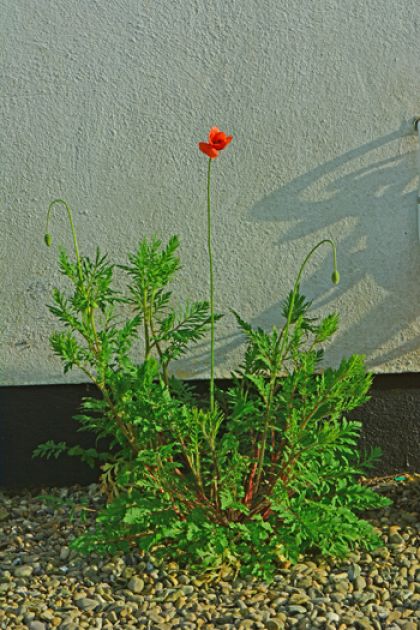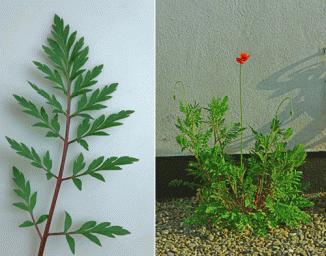This species is so similar to Long-headed Poppy, that it hardly deserves a page to itself but because it seeded itself in my own garden, I couldn’t ignore it. It is distinguished from the Long-headed Poppy in a couple of ways. Firstly it grows on heavier soils than that species which prefers arable ground and waste places. However, the main difference can be seen when the stem is broken. The latex or juice in the stem is yellow – there’s a clue in the name – and when it is dry, it becomes reddish. In Long-headed Poppy, that latex is white or cream to start with, but it turns brown or black when it dries. In almost every other aspect, the plants are similar, however the anthers can sometimes be yellow in this species whereas in Long-headed Poppy they are brown or blue-black. Otherwise the leaves, the seedpods and the general look of the plant is similar. This is an annual and it bears lovely silky orange flowers (3-7cm), only lasting a day or so. They bloom from May to July. They are lighter in colour than our Common Poppy and have four petals which can have a dark blotch at their base. These plants grow to about 60 cm high and the stalks have hairs which are appressed, not sticking up as in the Common Poppy. The grey-green leaves are pinnately lobed, alternately up the stem. The seed capsule is a narrow capsule, longer (up to 3 cm) than it is wide and quite hairless. Seeds are dispersed from the capsule through open pores in the top. This annual plant was probably introduced and belongs to the Papaveraceae or Poppy family..
I first identified this Poppy in my own garden in Dalkey, County Dublin in 2008 and I photographed it at that time.
If you are satisfied you have correctly identified this plant, please submit your sighting to the National Biodiversity Data Centre




